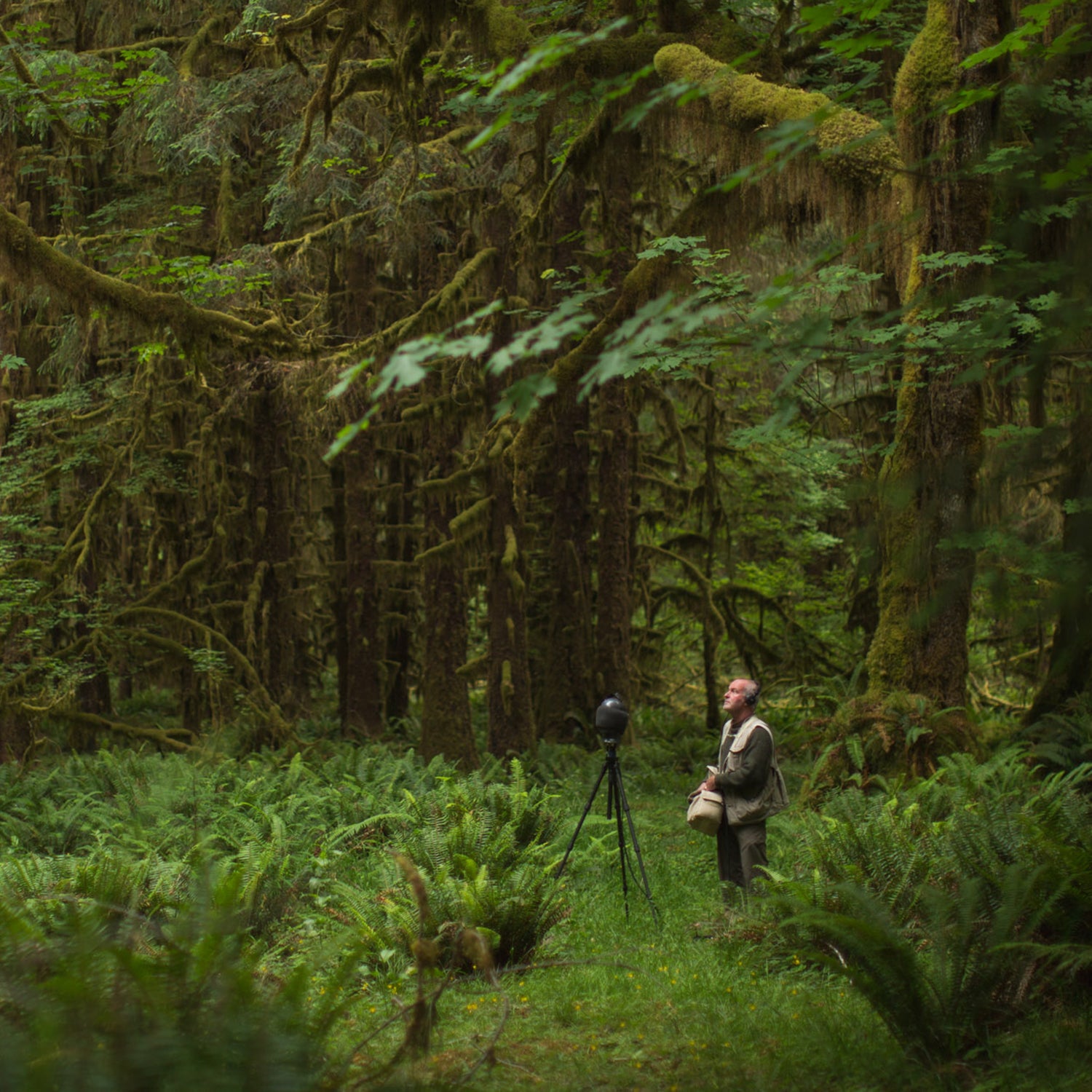One of the silver linings of the pandemic is that many of us found an even greater appreciation for escaping into nature. But as the world reopens and cranks the volume up, the roar of traffic and airline engines are more jarring than ever. Some days it might even be hard to recall the Great Quiet of 2020, the seismic silence from a COVID-slowed-down planet that scientists determined to be the longest period of quiet in recorded history.
So how do we move into a post-pandemic era and still enjoy the peace and quiet we promised we’d never take for granted again?
Gordon Hempton, known as , has a few ideas. Hempton is an acoustic ecologist who has spent the past four decades identifying and preserving natural soundscapes around the world and who cofounded ), a nonprofit, all-volunteer organization on a mission to protect daily access to quiet for everyone. “Quiet was the unexpected gift of the pandemic,” he says. With a handful of U.S. destinations currently under consideration for the Wilderness Quiet Parks designation, a pilgrimage to such a quiet place may be just the remedy for what ails you in these increasingly noisy times.
Similar to the ’s efforts to protect and preserve the night skies from light pollution, Quiet Parks status helps protect places largely lacking noise pollution. The status helps communities steward the quiet, which could include preventing additional land use, development, and aviation noise. Just as it’s harder to find night skies free from light pollution, quiet is also nearly extinct—97 percent of the U.S. population is exposed to noise pollution from planes and highway traffic.
Quiet Parks status is conferred after a multilevel process. First, light pollution, transportation routes, and noisy land use (like logging, hydroelectric power lines, and residential or commercial development) are evaluated. Then local or federal land managers are consulted. Finally, a QPI team visits the location and collects sound recordings. QPI hopes that receiving a coveted Quiet Park status will inspire grassroots community involvement, local governments, land-management agencies, tribal governments, and others to preserve the quiet.
“When we save quiet, we save everything else,” Hempton likes to say. He’s right. Science shows that periods of quiet improve cognitive and creative skills, reduce stress, and help us live longer. And quiet isn’t only a natural resource important to humans—wildlife needs pure acoustic environments to communicate in.
In 2019, QPI gave the first Quiet Park award to the in the Ecuadorean Amazon rainforest, home of the Cofán people. Since then, it has established close to 300 quiet places around the world, including Quiet Trails and the first Urban Quiet Park, in Taiwan.
Hempton and the QPI team are evaluating the following quiet places in the U.S., working on saving such destinations as cherished sites where we can hear birds chirping—and ourselves think.
Haleakala National Park, Hawaii
This isn’t merely the quietest place in the U.S.—it’s “the quietest place on earth,” according to Hempton. (He is featured in the of the same name.) The park has the fewest decibels and least noise pollution of any place Hempton’s recorded. Given Haleakala Crater’s high elevation (10,023 feet), and the fact that air traffic arriving on Maui happens below the volcano rim, in addition to volcanic ash within the crater absorbing sound waves, very few sounds penetrate the park. What will you hear? Wind blowing through volcanic formations so faint it sounds like a whistle, or maybe the occasional nene—a Hawaiian goose. “Hawaiian culture is sound-rich, with a history about silence as the birthplace of creativity,” Hempton says. “There are more than 100 Hawaiian words that describe different kinds of winds.”
Descend into the crater for natural quiet, dress warmly, and bring water and a headlamp, because thick mist can arrive at any time, advises Hempton. An added bonus of visiting this park? Pristine stargazing is spectacular from the summit of Haleakala Crater.
Hoh Rain Forest, Washington
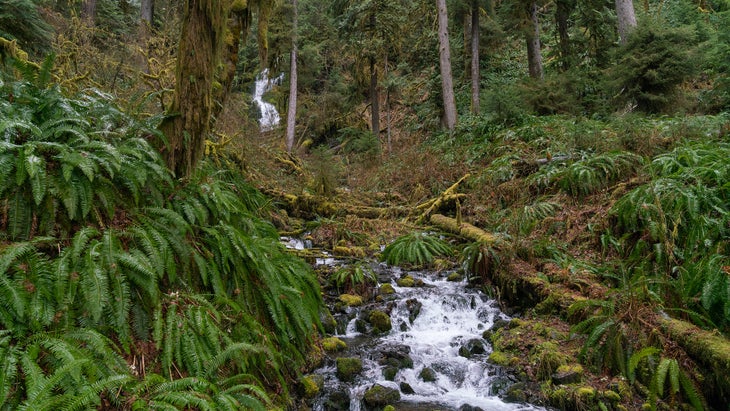
Audio clip: Hoh Rain Forest birds
Hempton’s quest for quiet began in 2005, with his One Square Inch of Silence project, in which he determined that the Hoh Rain Forest of Olympic National Park, home to the planet’s tallest forest, was possibly the quietest place in the country, due in part to its sound-absorbing moss. He also discovered unique acoustics there, including the “flutelike bugling of Roosevelt elk.” Unfortunately, the U.S. military directs air traffic over the park, a factor currently preventing it from being awarded official Quiet Park status.
Big Bend Ranch State Park, Texas
“By all accounts, this may be the quietest, least noise-polluted location in the U.S,” Hempton says. Two reasons contribute: its location on the Mexico–U.S. border is an area that sees less air traffic, and its arid climate is less elastic, so when any sound (including noise pollution) occurs, it fades quicker and is less clear.
“The canyon areas at Big Bend provide magical places to listen, as these places are in the shade most times of day, providing particularly good echoes and a stunning sense of space,” says Hempton.
American Prairie Reserve, Montana
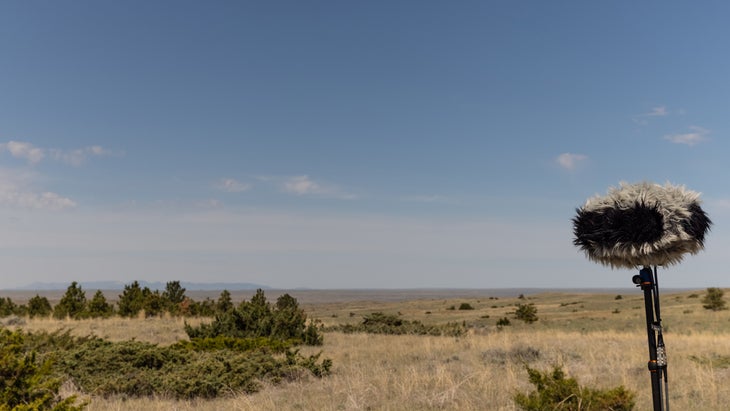
Audio clip: Coyotes and birds at dawn on the American Prairie
The goal of this collaboratively managed wildlife preserve is to create the largest nature reserve in the contiguous U.S., with approximately 3.2 million acres of land. It’s also home to one of Hempton’s favorite soundscapes, a mix of prairie winds and a spring dawn chorus of sharp-tailed grouse singing and dancing on the lakes. Hempton advises to head out well before sunrise in order to catch males performing to attract a mate. With little air-traffic intrusion, you might even be able to hear bison grunting miles away.
Boundary Waters Canoe Area Wilderness, Minnesota
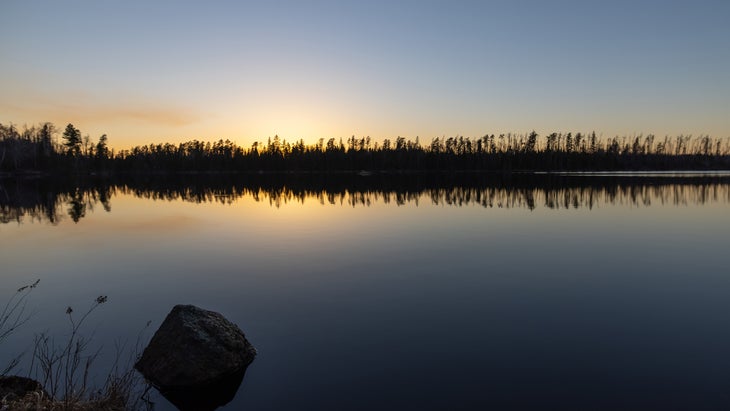
“Dear to my heart, the BWCA [was] the first place to be defended from aviation noise, when Wilderness Watch took the Air Force to court and effectively won,” says Hempton. This vast wilderness on the Canadian-American border covers over one million acres of protected land that’s off-limits to military aircraft and other motorized vehicles and vessels. It is the only wilderness in the country that has an airspace reservation that prohibits flights below 4,000 feet. Even the lakes are largely free of motor sounds—only 16 of the 1,100 lakes allow motorized watercraft. Here, you must paddle. It’s a true wilderness, adds Hempton, with songbirds charming daytime listeners, frogs and toads croaking at night, not to mention the howling of wolves and the echoing calls of the iconic loons.
Glacier National Park, Montana
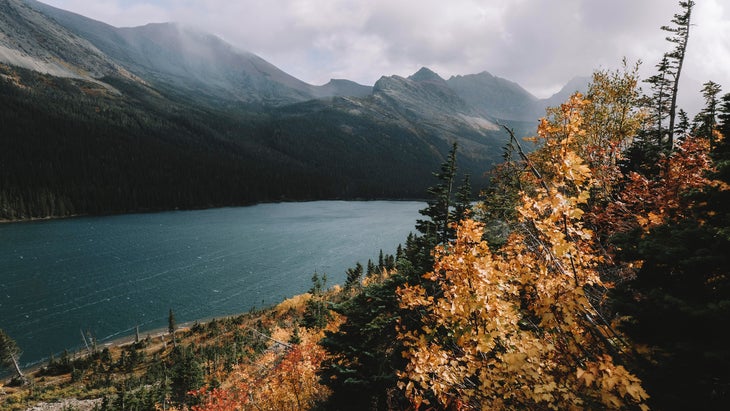
Audio clips: A Glacier snowstorm (first clip); Kintla Lake
This million-acre-plus glacier-carved national park has one of the largest intact ecosystems in the lower 48. Because it’s on the border of Canada, there’s also less air traffic, notes Hempton. “The stunning and profound coniferous forests and alpine lakes are all special opportunities to listen to natural concert halls,” he says. He also suggests tuning your ears to listen for the “musical notes” of stones in the streambeds.
Quiet Park Trips
If you’d rather have a guide to find some peace and quiet, a new mindful adventure company, has partnered with QPI to offer Quiet Park trips.
“In today’s modern world, there’s so much noise around us. But potentially even more problematic is that our minds often match that level of noise, processing a seemingly constant flow of news, social media, and work,” says Recal founder Anthony Lorubbio. A three-time CEO, Lorubbio created his newest venture after suffering from work-induced burnout. Recal’s Quiet Park series immerses travelers deep into nature, free from human-made noise, in an effort to reduce stress and exhaustion, which Lorubbio believes are increasingly ailments of our grind culture. Add in pandemic fatigue, and we’re even more disconnected from personal interactions and nature and in need of an escape from the constant burrow of enmeshed home-work life, he says.
“We believe there is a connection between the growing rates of burnout and our human disconnection from nature—especially true and pure quiet,” Lorubbio says.
As part of its new , Recal is offering trips in Boundary Waters Canoe Area Wilderness and Glacier National Park. On the Boundary Waters adventure, you canoe, portage, camp, and listen to the natural soundscapes on quiet hikes, as well as participate in breath-work sessions and enjoy sensory-focused silent meals. On the Glacier trip, activities range from riding e-bikes on the car-free Going-to-the-Sun Road to silent stargazing (Glacier is also a designated Dark Sky park) to mindfulness practices designed to tap your inner quiet.
All Recal guides are trained by the QPI team on how to listen while immersed in quiet. Matthew Mikkelsen, executive director of QPI’s Wilderness Quiet Parks and an audio engineer and sound recordist, offers this tip: don’t try to figure out sounds or name them. “Naming the object is almost a distraction for some folks, because then it takes you out of the headspace of listening. Truly listening means not placing judgment, priority, or bias on the information you’re receiving.” Simply let the sounds surround you.


